
How to recognise and help a gambler?
A large number of people who gamble see this activity as a way of having fun, a hobby or a pastime, not realising that gambling
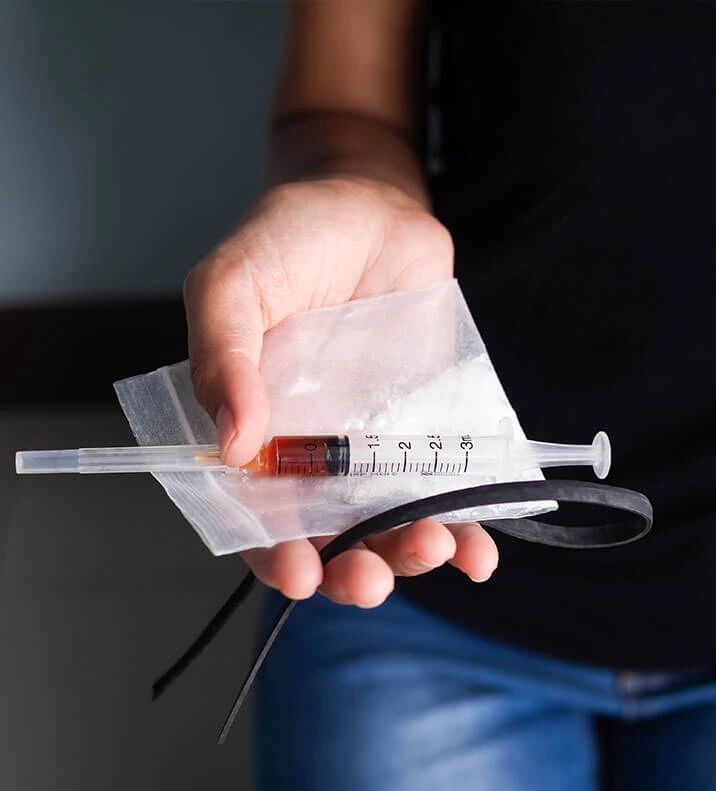
Rapid detoxification from opiates is the most reliable and extremely effective solution for cleansing the body of traces of any opiates. In addition to the fact that this method, as part of the treatment of opiate addiction, is fast, it is also painless for the patient, so that they do not feel any unpleasant symptoms of withdrawal from opiates.
Opiates (often called opioids) are powerful psychoactive substances that are related to chemicals found in the opium poppy plant. More precisely, opiates are substances, i.e. derivatives obtained chemically from the mentioned plant. Certain opiates are used clinically and medicinally to treat moderate to severe chronic pain. On the other hand, there are certain opiates that are illegal and not allowed to be used in any form (heroin).
Because of their intensely sedative effects, opiates have an extremely high rate of abuse, which inevitably leads to opiate addiction. More precisely, opiates have an extremely high potential for the development of addiction. People who use opiates as pain relievers are at high risk of addiction, and it only takes 3 to 5 days of taking a given opioid to create an addiction. Moreover, sometimes only one consumption, or use, is enough for a person to become addicted to a specific opiate (e.g. heroin).
On average, 75 per cent of people who abuse heroin initially used “lighter” opiates as pain relievers. Taking a large dose of opiates in a short period of time or using extremely potent opiates can lead to intoxication (overdose), which can result in death.
In order to know why rapid opiate detoxification is an effective solution for cleansing the body of these substances, we must first look at why opiate addiction occurs in the first place.
Namely, addiction to opiates most often begins when a person is prescribed a certain painkiller (type of opiates). The patient then receives instructions from the doctor and the recommended dose. In most cases, patients have no intention of abusing these substances. However, after some time of using this drug, i.e. opiate, a person may feel that this substance no longer has the same effects as before, at the beginning. That feeling is caused by an increased tolerance to the opiate.
Tolerance leads to a person now using opiates more often and in doses higher than recommended in order to achieve the desired effect. This way of using opiates almost certainly causes physical dependence on opiates, whereby the person continues to (ab)use opiates in order to feel normal.
Consequently, physical addiction to opiates leads to an intense craving for these narcotics – psychological addiction to opiates. Such addiction is characterized by strong urges to continue using opiates, despite all the harmful and negative consequences it causes.
When a person’s behavior in search of opiates completely gets out of control and begins to endanger their physical and mental health, social life, family, work, friendship and financial relationships, it can be safely said that there is an addiction to opiates!

As we have already pointed out, a large part of opiates are prescribed to patients for medical purposes. In addition to these legal opiates, there are also those that are illegal and not allowed for use, and the most famous among them is certainly heroin.
All opiates can essentially be divided into two large groups: antagonists and agonists.
Antagonists are opioid substances that block or significantly reduce the effects of opiates (so-called drug blockers). One of the most well-known opioid antagonists is Naltrexone (Naloxone), which is used in the treatment of opiate addiction. More specifically, after rapid opiate detoxification, the patient is given Naltrexone as an additional therapy to help maintain abstinence and withdrawal from opiate abuse.
Agonists are substances that have the opposite effect of antagonists. More specifically, agonists mimic the effects of endorphins that are naturally produced in the body, creating an opioid effect by interacting with specific opioid receptors in the brain. Agonists include drugs such as morphine and fentanyl, which are most commonly used in medical settings and have the strongest effects.
Many substances in the category of agonists have an extremely high potential for abuse and developing addiction (heroin, buprenorphine, hydrocodone, oxycodone, methadone…)
Addiction is a condition much more serious than a strong desire to use opiates — it is a neurochemical and neurological disease that a person perceives as a situation from which they cannot escape!
An individual struggling with an opioid abuse disorder will often want to quit, but feel unable to do so on their own. The only way a person can completely overcome and solve this problem is opiate addiction treatment, which includes rapid opiate detoxification. This treatment and procedure can only be performed by an authorized, professional, qualified and licensed drug detox center, such as MedTiM Clinic.
As we have already pointed out, a large part of opiates are prescribed to patients for medical purposes. In addition to these legal opiates, there are also those that are illegal and not allowed for use, and the most famous among them is certainly heroin.
All opiates can essentially be divided into two large groups: antagonists and agonists.
Antagonists are opioid substances that block or significantly reduce the effects of opiates (so-called drug blockers). One of the most well-known opioid antagonists is Naltrexone (Naloxone), which is used in the treatment of opiate addiction. More specifically, after rapid opiate detoxification, the patient is given Naltrexone as an additional therapy to help maintain abstinence and withdrawal from opiate abuse.
Agonists are substances that have the opposite effect of antagonists. More specifically, agonists mimic the effects of endorphins that are naturally produced in the body, creating an opioid effect by interacting with specific opioid receptors in the brain. Agonists include drugs such as morphine and fentanyl, which are most commonly used in medical settings and have the strongest effects.
Many substances in the category of agonists have an extremely high potential for abuse and developing addiction (heroin, buprenorphine, hydrocodone, oxycodone, methadone…)
Heroin is not used for medical purposes, but it can often be found illegally on the black market. It can be used by injection, orally, by snorting or smoking. Heroin is often contaminated with fentanyl or carfentanyl, which increases the risk of abuse, overdose and death.
It is often prescribed as a pain reliever under other names, such as Oxycontin, and has a high potential for abuse and addiction.
As the main ingredient in many pain relievers, Hydrocodone can often be found in other medications such as Vicodin, and is often combined with Acetaminophen or Ibuprofen.
Morphine is often used in people suffering from chronic, severe pain. This opiate is one of the most addictive substances and is responsible for a large number of deaths due to abuse.
It is a synthetic painkiller which, according to its effect, is up to 100 times more potent and stronger than morphine, which is why it is prescribed only in cases of extremely severe pain. When used in combination with heroin, fentanyl very quickly leads to overdose and fatal outcomes.
This opiate is manufactured to treat moderate to medium pain and cough. Codeine is often combined with sweetened drinks to create a concoction known as "Purple Drank" or "Sizzurp".
It is a long-acting opiate used to treat moderate to severe pain. Sometimes methadone is used as a substitution therapy for the treatment of heroin addiction, however, it definitely cannot cure opiate addiction, since methadone is also a substance with a high potential for addiction.
All opioid substances have a common characteristic, which is that in a very short time of consumption they can cause addiction to opiates.
Opiate addiction is a long-term and chronic disease that can cause major health, social and financial problems. Opiates belong to a class of substances that, acting on the central nervous system, cause a feeling of pleasure and pain relief.
Opiate addiction is characterized by an intense, uncontrollable and compulsive desire to consume opioid drugs, even when there is no medical need to take them. Unlike many other psychoactive substances, opiates have a high potential to develop addiction even if used according to a doctor’s prescription (we are talking, of course, about legal opiates). This is precisely why prescription drugs are abused in a large number of cases.
Opiate addicts prioritize the use and consumption of these narcotics over all other activities and responsibilities in life. This is precisely why addiction to opiates is characterized by the abuse of these substances, despite all their harmful effects.
Opiates change the chemical structure of the brain and lead to tolerance, which means that over time a person needs a higher dose to achieve the desired effect. In the case of sudden cessation of opiates, there are very unpleasant physical and psychological withdrawal symptoms, which will be discussed later.
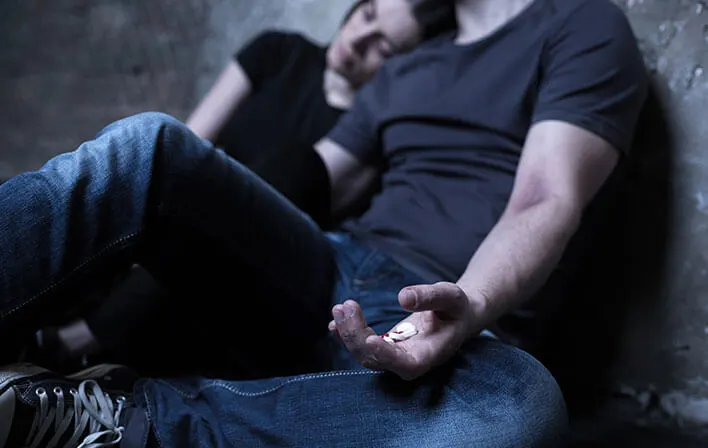
Not only can it cause serious health problems, but addiction to opiates can often lead to overdose. Opiate overdose (intoxication) occurs when a person abuses a large dose of opiates in a short period of time, which causes slowing of breathing or complete respiratory collapse (stopping breathing). If rapid opiate detoxification is not carried out in this case in an appropriate drug rehabilitation center, the risk of death is extremely high.
Both legal and illegal opiates carry the risk of overdose if a person takes too many of these substances or combines them with other narcotics (say, benzodiazepines).
In order to carry out a rapid detox from opiates, it is necessary to first know what all the symptoms of addiction to this type of narcotics are. Rapid detoxification from opiates certainly completely cleans the addict’s body of traces of opioids, but the road to addiction treatment does not end there.
This is precisely why the drug detoxification center, as the first and basic step in the treatment of opiate addiction, performs a quick cleansing of the body. There are a number of signs that indicate that a person is addicted to an opiate. However, this does not mean that a person will show or develop all these symptoms at the same time.
It depends on a number of factors such as the type of opiate, the dose taken, the period of time of opiate use, the frequency of consumption, mental predispositions, the general state of health of the person, etc.
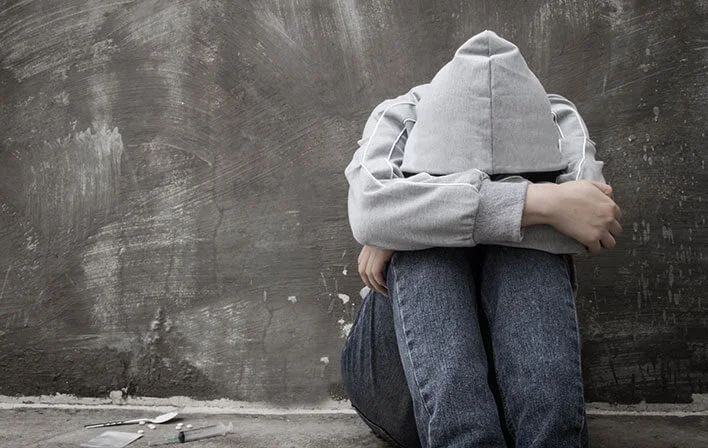
In the vast majority of cases, opiate addicts are aware that they have a problem, they just don’t want to admit it to their family or friends. In the desire to get rid of the addiction, which has already started to take control over the addict’s life, the person will try to “get clean” of the opiate on their own, independently – cold turkey. The question that addicts then ask themselves is – how long does weaning from opiates take? More specifically, how long does it take to get weaned off an opiate?
Namely, chronic and compulsive abuse of opiates causes a person to acquire, in addition to psychological, physical dependence on these psychoactive substances. Their body has developed a tolerance to the use of opiates, which is why the person now needs larger doses at more frequent time intervals in order to achieve the desired effect.
When a person abruptly and suddenly stops abusing opiates, an opiate withdrawal crisis occurs, the symptoms of which can be extremely painful, unpleasant and uncomfortable for the addict. Wanting to bypass these symptoms, the person reaches for the substance again, thus entering a vicious cycle of addiction.
It happens that a person, in a state of pain and agony caused by an opiate crisis, takes too large a dose of these psychoactive substances, which results in intoxication, or overdose. Death is one of the most severe and cruel consequences of an opiate overdose, and statistics show that the number of overdose deaths has risen sharply.
The answer to the question “how long does opiate withdrawal last” depends primarily on the type of opiates that a person abuses. Some opiates can cause withdrawal symptoms earlier and some later. Withdrawal from certain opiates will take longer than withdrawal from others.
In addition, the length of opiate withdrawal depends on the following factors;
The initial symptoms of withdrawal from heroin appear within 8 to 12 hours after the last use, and their strongest effect is in the period from 1 to 3 days after the last use and can last up to 7 days.
Initial withdrawal symptoms from short-acting opiates, such as morphine and the fast-acting chemical formulations of oxycodone, hydrocodone, and fentanyl, occur within 8 to 24 hours of last use. Withdrawal from these opiates can take up to 10 days.
On the other hand, there are long-acting and long-release opiates. These include methadone, as well as controlled chemical formulations of morphine, oxycodone, hydrocodone, and fentanyl that are pharmacologically engineered to release their substance gradually. Withdrawal symptoms from these opiates begin within 36 hours of last use, and withdrawal can last 14 days or longer.

One of the most commonly abused opiates is methadone, which causes addiction in a very short period of time. The first and initial step towards the treatment of addiction to this opiate is detoxification from methadone.
Methadone, by the way, is a synthetic opiate that doctors prescribe to treat moderate to severe pain. Also, methadone is often used as a substitution therapy to treat heroin addiction. However, methadone therapy in this case is not a reliable medical method, because it CANNOT treat opiate addiction, since methadone itself has highly addictive properties!
People who start using methadone to overcome their heroin addiction are at greater risk of abusing the substance because they already have a history of opiate addiction. Every time a person uses more methadone than prescribed, or uses it without a prescription, they are abusing this narcotic, putting themselves at risk of addiction.
Like morphine and heroin, methadone works on the same opioid receptors in the brain. Because of its high addictive potential, methadone, although a prescription substance, is often abused.
Side effects of methadone abuse include sedation, euphoria, decreased reaction time and attention, drowsiness, droopy eyelids, dry mouth, muscle weakness, low blood pressure and low body temperature, and little or no reaction to light. In higher doses, methadone creates a “high” feeling, which can also be created and increased by intravenous methadone use.
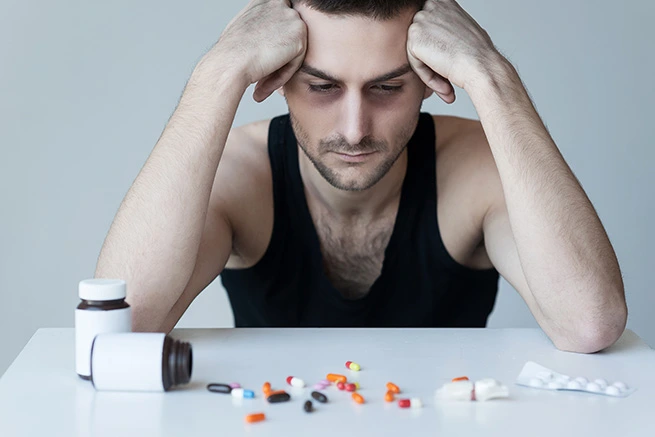
Only medically reliable and proven methadone detoxification can cleanse a person’s body of all traces of this opiate.

As we could see, independent detoxification on its own is an extremely painful and obsessive process that leads to relapse, that is, the risk of relapse. On the other hand, MedTiM, as a modern, licensed and certified center for drug detoxification, represents a professional institution where medically verified, painless, safe and fast detoxification from opiates is performed.
Our team of internationally recognized and well-known doctors, in the process of treating opiate addiction, applies the most modern method of cleansing the body of all traces of these substances – ultra-rapid opiate detoxification (UROD procedure).
Ultra-rapid opiate detoxification is an extremely effective method whose goal and effect is to speed up the process of cleaning the body from traces of opioid substances. At the same time, the UROD procedure in our clinic reduces or shortens the intensity of the unpleasant symptoms of opiate withdrawal crisis during withdrawal.
Ultra Rapid Opiate Detoxification (UROD) thoroughly and rapidly clears opioid receptors and normalizes brain transmitter levels. We perform the UROD procedure in cases where there are no contraindications for the application of this type of detoxification.
Before the UROD procedure is prescribed, the patient needs to undergo a series of diagnostic tests in order to ensure that there are no contraindications. These diagnostic tests include, among others, blood tests, electrocardiography and other measures aimed at the patient’s health.
After the diagnosis of the patient, the next step in the treatment of opiate addiction is ultra-rapid opioid detoxification. This procedure is a vital and integral part of our overall opioid addiction treatment program.
The UROD procedure lasts from six to eight hours, and during all that time the patient is under the constant supervision of an anesthesiologist, while doctors monitor all the patient’s vital parameters. This procedure is performed under general anesthesia. During the UROD procedure, opiate antagonists (drug blockers) – Naltrexone or Naloxone – are gradually given to the patient, which leads to the cleaning, that is, the elimination of opiates from opioid receptors.

Most often, it is necessary for the patient to go through two or three such treatments in order for the complete detoxification procedure to be realized and successful. Sometimes just one such procedure is enough. During ultra-rapid opiate detoxification, patients are under 24-hour supervision by medical staff.
By the time you wake up, most of the unpleasant, painful, and stressful symptoms of opiate withdrawal are gone. Residual symptoms are easily alleviated with conventional medicines.
Also, immediately upon awakening, patients report feeling a surge of energy as the chemical balance in the brain begins to rebalance and return to normal levels.
Patients at our clinic, thanks to ultra-fast opioid detox, overcome most symptoms of withdrawal crisis under total anesthesia. This means that rapid opiate detoxification at the MedTim clinic is painless and medically safe, because the patient avoids all unpleasant symptoms, such as pain, stress, anxiety…
Therefore, the UROD procedure helps the body to expel opiates in a faster and more painless way. After the patient wakes up from anesthesia, the biggest and most intense part of the crisis is over. In the event that minimal opiate crisis symptoms remain after waking up, their intensity and strength are significantly reduced and easily eliminated with conventional non-opioid analgesics.
We stated that independent withdrawal from opiates without medical help is dangerous and risky. Fearing crisis symptoms, patients continue to use opiates. However, the ultra-rapid detoxification of the body from opiates makes this entire withdrawal process bearable – without pain and unpleasant symptoms.
Therefore, rapid opiate detoxification at our clinic is the most effective way not only to avoid the unpleasant physical and psychological symptoms of an abstinence crisis, but it is also the best solution for the treatment of opiate addiction.
In the case of a contraindication for ultra-fast detoxification or when we estimate that a short detox will give the desired result, we apply the so-called sleep medicine for detoxification (medical sleep).
Medical or artificial sleep is a short detox procedure achieved by the use of sedatives. When the sleep medicine for detoxification works, then the patient experiences an absence or decrease in the level of consciousness, suppression of reflexes and sensitivity to pain. Sleep lasts from one to three hours, and during sleep, the patient’s brain and body rest, recover from stress, pain and other unpleasant symptoms of the opiate crisis.
Therefore, during a short detox, the balance of neurotransmitters that has been disturbed by opiate abuse is restored. After turning off the anesthetic supply, the patient wakes up after only a few minutes, at which time the balance is fully restored and the patient can move safely on their own.
Sleep remedy for detoxification, i.e. medical sleep, eliminates irritability, diminishes or completely reduces thoughts about drugs, while the symptoms of withdrawal crisis are absent or significantly reduced. During artificial sleep, there is an accumulation of missing amounts of endorphins, dopamine and serotonin in the brain (hormones that are “responsible” for the feeling of well-being, satisfaction and good mood).
A short detox is one of the most important methods in the process of treating opiate addiction, and thanks to it, extraordinary results are achieved.
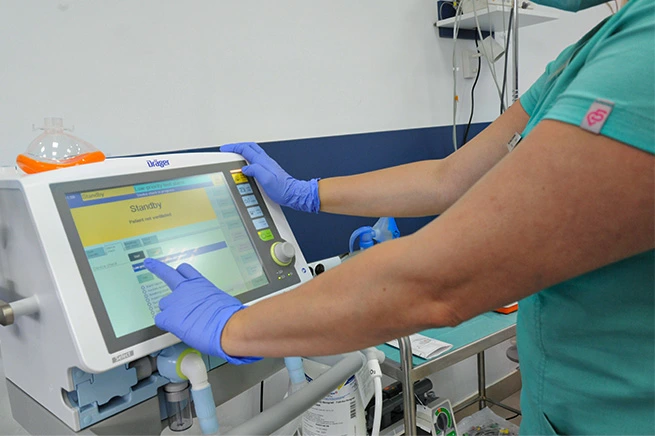
After the UROD detoxification in our clinic, the patient receives anti-abstinence drugs and vitamin support that helps reduce the desire for opiates, restoring and revitalizing the health of organs affected by the abuse of opioid substances.
However, even though UROD is a rapid opiate detoxification, the complete process to end opiate addiction is never fast. In addition to inpatient treatment, the high success rate of the MedTiM clinic in treating opiate addiction and cleansing the body of these substances is also a consequence of the implementation of additional outpatient treatment that monitors the progress of patients one year after discharge.
We will help you start and maintain a drug-free life and get back on the right path! Because MedTim cares about you!

A large number of people who gamble see this activity as a way of having fun, a hobby or a pastime, not realising that gambling

Heroin is a type of opioid. It is a highly dangerous substance that causes severe addiction. It affects the whole organism very quickly and it
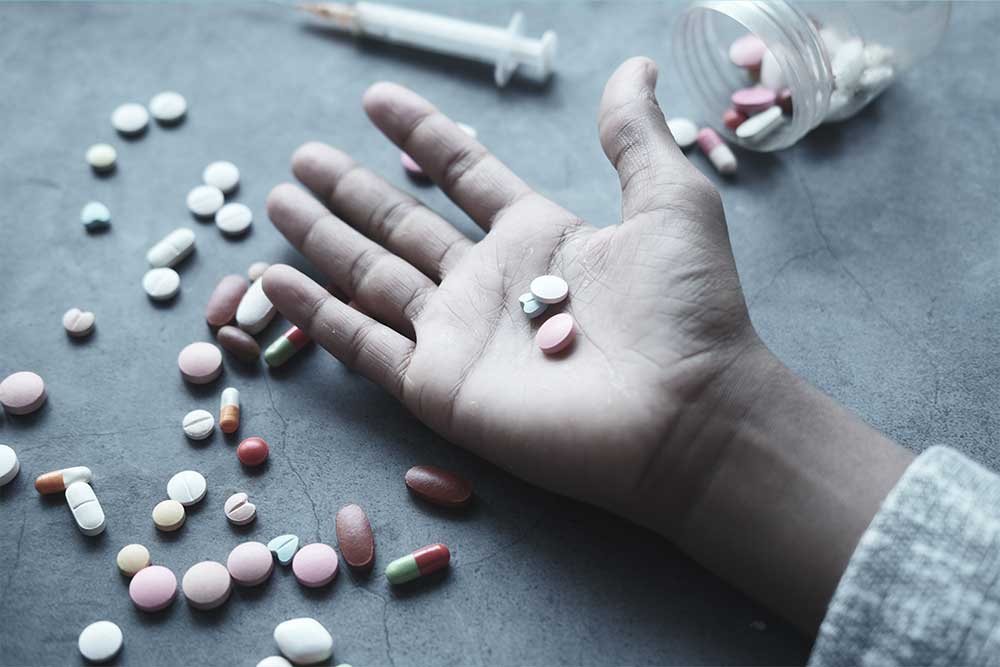
Xanax is a really powerful substance that belongs to group of medicines called benzodiazepines. Actually, Xanax contains the active substance alprazolam and it is a
Chiamaci ora +381668035075
Oppure contattaci tramite il modulo email sottostante
